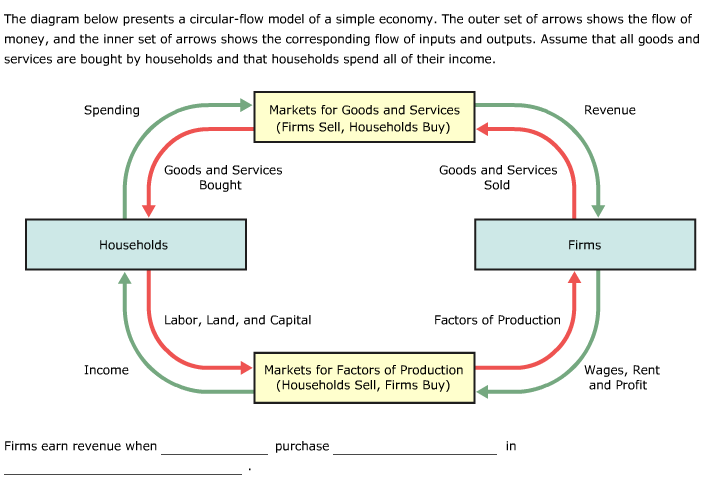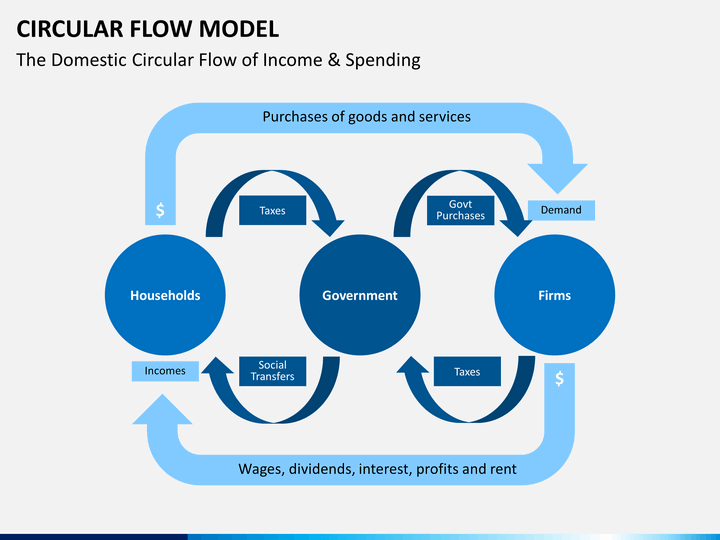

In these times, currency shows less potential to buy products and services. Inflation When there is an increased price of goods and services over a long period, it is called inflation. It contains value judgments and recommendations about how the economy should be. Normative economics, on the other hand, is concerned with making judgments about what “should be” done. Positive and Normative Economics Positive economics is concerned with describing and explaining economic phenomena it is based on facts and empirical evidence. They argued that the “invisible hand” of market incentives and profit motives were more efficient in guiding economic decisions to prosperity than strict government planning.
#Circular flow model free#
All three of these economists were advocates for a free market. Market Economy The idea of a market economy first came from classical economists, including David Ricardo, Jean-Baptiste Say, and Adam Smith.

Each has the ability to inject and remove money or goods and services from the process. Many circular flow models omit important players, such as government, banks, and the foreign sector.

The circular flow model of consumer income and spending moves in the opposite direction to the classic model incorporating goods and services and production factors.In simple terms, the circular flow model illustrates the cyclical flow of money as it moves between households and firms.However, this is at least partially offset by exports, which leak goods but injects income. Through imports, the foreign sector injects goods but leaks income because goods are manufactured offshore. They can also inject money into the circular flow model in the form of loans and interest rate cuts. Financial institutionsīanks also contribute to leakage by encouraging households and businesses to save their money with higher interest rates. Governments also remove money from the flow (“leakage”) through sales, income, or property taxes. Government spending can be directed toward the product market (a new highway) and the resource market (teachers, fuel, or electricity).
#Circular flow model drivers#
Indeed, simplistic circular flow models omit other key drivers of economic systems.Īn important player because of its ability to inject and remove money from the flow. Supply and demand rarely occur in a vacuum. Other key factors in the circular flow model This income is then used by the household to purchase goods and services, thereby restarting the process.



 0 kommentar(er)
0 kommentar(er)
